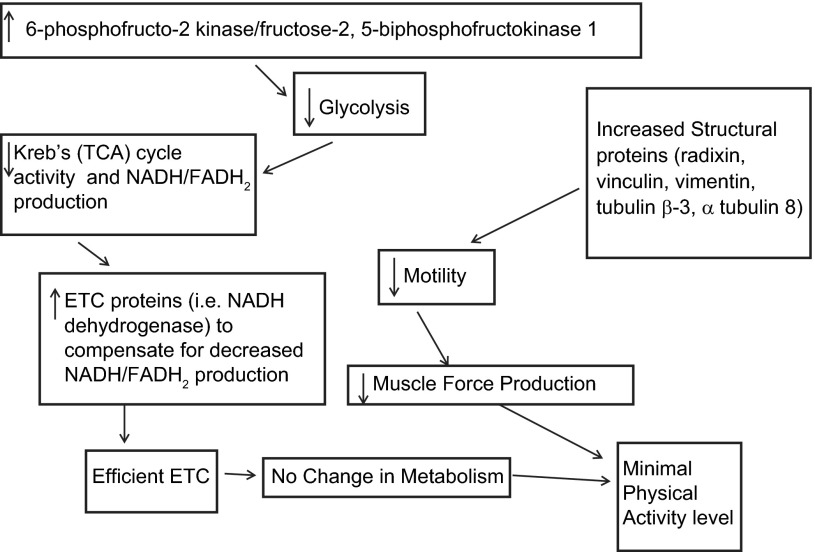Fig. 9.
Proposed schema of how peripheral skeletal muscle protein mechanisms might inhibit physical activity in low-active animals. 1) An increase in 6-phosphofructo-2 kinase/fructose-2,5-bisphosphofructokinase 1 decreases glycolysis and Krebs (TCA) cycle activity. 2) With a decrease in Krebs (TCA) cycle activity, there is a decrease in NADH and FADH2 production, which in turn decreases ATP production and physical activity. 3) However, with an increase in the ETC proteins (NADH dehydrogenase) there is an increase in the efficiency of the ETC thereby compensating for the decrease in Krebs (TCA) cycle activity. 4) The increase in structural proteins, radixin, vinculin, vimentin, tubulin beta-3, and alpha tubulin 8 decreases mobility of actin and thereby reduces force production and physical activity.

